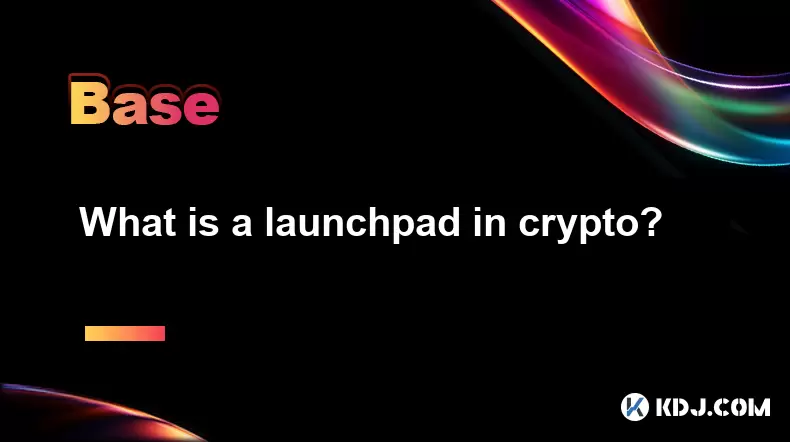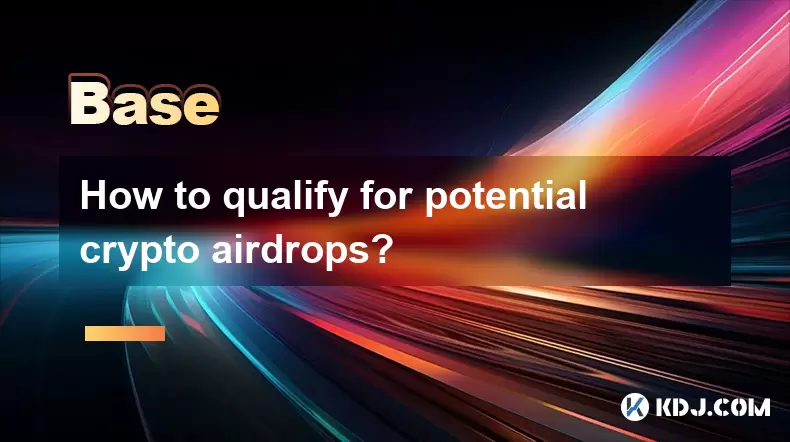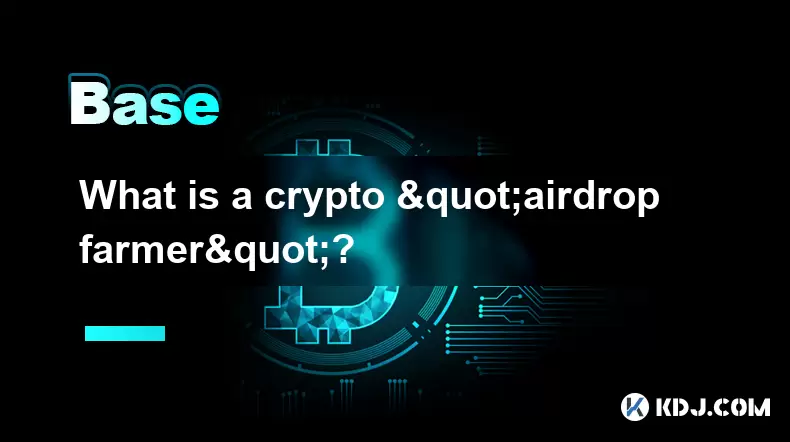-
 Bitcoin
Bitcoin $119300
1.07% -
 Ethereum
Ethereum $3730
3.87% -
 XRP
XRP $3.235
0.29% -
 Tether USDt
Tether USDt $1.000
0.00% -
 BNB
BNB $783.5
1.88% -
 Solana
Solana $188.7
0.25% -
 USDC
USDC $0.0000
-0.01% -
 Dogecoin
Dogecoin $0.2399
-0.44% -
 TRON
TRON $0.3157
2.37% -
 Cardano
Cardano $0.8254
1.94% -
 Hyperliquid
Hyperliquid $42.83
0.14% -
 Stellar
Stellar $0.4372
3.21% -
 Sui
Sui $3.859
4.91% -
 Chainlink
Chainlink $18.53
3.53% -
 Hedera
Hedera $0.2464
0.01% -
 Bitcoin Cash
Bitcoin Cash $519.8
2.46% -
 Avalanche
Avalanche $24.24
2.17% -
 Litecoin
Litecoin $113.7
0.73% -
 UNUS SED LEO
UNUS SED LEO $8.990
0.30% -
 Shiba Inu
Shiba Inu $0.00001390
0.21% -
 Toncoin
Toncoin $3.188
1.49% -
 Ethena USDe
Ethena USDe $1.001
0.02% -
 Polkadot
Polkadot $4.090
-0.91% -
 Uniswap
Uniswap $10.40
4.08% -
 Monero
Monero $326.6
3.12% -
 Bitget Token
Bitget Token $4.627
-0.42% -
 Pepe
Pepe $0.00001281
0.76% -
 Dai
Dai $1.000
0.01% -
 Aave
Aave $291.6
0.98% -
 Cronos
Cronos $0.1269
7.26%
What is a launchpad in crypto?
Crypto launchpads enable blockchain projects to raise funds through token sales, offering investors early access to promising ventures while implementing vetting processes to reduce scam risks.
Jul 22, 2025 at 01:07 pm

Understanding the Concept of a Crypto Launchpad
A launchpad in the cryptocurrency space refers to a platform that enables new blockchain projects to raise funds and gain visibility through token sales. Typically, these platforms are built on existing blockchain ecosystems, such as Binance Smart Chain, Ethereum, or Solana, and serve as intermediaries between project developers and potential investors. The primary function of a launchpad is to facilitate Initial DEX Offerings (IDOs), which have become a popular alternative to traditional Initial Coin Offerings (ICOs) and Venture Capital funding.
Unlike ICOs, which often lacked transparency and regulatory oversight, crypto launchpads usually implement a vetting process for projects before allowing them to raise capital. This helps reduce the risk of scams and ensures that only promising, well-documented projects get exposure to a large investor base.
How Crypto Launchpads Operate
The mechanism behind a crypto launchpad involves several key components. First, project teams apply to the launchpad platform with their whitepaper, roadmap, and team information. The platform's team or community reviews the project to assess its legitimacy and potential. If approved, the project is scheduled for a token sale event.
During the token sale, investors can participate by contributing funds in exchange for the new project’s tokens. These tokens are usually sold at a predetermined rate, and the sale may be structured in phases or with a tiered system based on investor contribution levels. After the sale concludes, the tokens are distributed to investors' wallets, and the project is often listed on a decentralized exchange (DEX) for trading.
Some launchpads also offer staking or liquidity pool incentives, where users can lock up their tokens to earn rewards or gain early access to future token sales.
Benefits of Using a Crypto Launchpad
Crypto launchpads provide several advantages to both project developers and investors. For developers, a launchpad offers structured fundraising, marketing support, and access to a ready-made investor audience. It also enhances credibility, as being listed on a reputable launchpad implies a level of due diligence has been performed.
For investors, launchpads provide curated opportunities to invest in early-stage projects that may have high growth potential. Many launchpads also implement fair launch mechanisms, ensuring that small investors are not completely outbid by whales or institutional players.
Additionally, some launchpads integrate with decentralized finance (DeFi) protocols, allowing users to stake or yield farm tokens immediately after purchase, thereby increasing the utility and liquidity of the new tokens.
Popular Crypto Launchpad Platforms
There are several well-known launchpad platforms in the crypto space, each with its own unique features and community base. Binance Launchpad, one of the earliest and most recognized platforms, is operated by the Binance exchange and has helped launch successful projects like BitTorrent (BTT) and Celer Network (CELR).
Polkastarter is another notable platform, known for its cross-chain compatibility and focus on decentralized fundraising. It allows users to participate in token swaps and IDOs across multiple blockchains.
DuckSTARTER is a newer launchpad that emphasizes community-driven governance and aims to lower barriers for small investors. It often includes NFT-based whitelisting and tiered participation systems to ensure fairness.
Other notable platforms include GameFi Studios, Seedify.fund, and TrustSwap, each offering different tools and ecosystems tailored to specific niches like gaming, DeFi, or NFTs.
How to Participate in a Launchpad Event
Participating in a launchpad event requires several preparatory steps. First, you need to identify a reputable launchpad platform and connect a compatible wallet like MetaMask or Trust Wallet. You’ll also need to hold the platform’s native token, which is often required for participation or to qualify for whitelist benefits.
Next, you should monitor the platform’s announcements and project calendars to stay updated on upcoming launches. Once a project is listed, review its whitepaper, team credentials, and roadmap thoroughly before deciding to invest.
When the token sale begins, you can connect your wallet to the launchpad interface and contribute funds. Some platforms may require you to complete a KYC process, especially for higher-tier allocations.
After the sale ends, the tokens are usually automatically distributed to your wallet, and the project may be listed on a DEX within a short period. You can then choose to hold, trade, or stake the tokens depending on the project’s offerings.
Risks and Considerations When Using Launchpads
While launchpads offer exciting opportunities, they also come with risks. One of the most significant risks is market volatility. Tokens launched via IDOs can experience extreme price swings shortly after listing, which may lead to losses if not managed carefully.
Another risk is project failure or rug pulls, even though launchpads perform due diligence. Not all projects succeed, and some may fail to deliver on their promises or lose community interest over time.
Additionally, scammers may create fake launchpad websites to mimic legitimate platforms. Always ensure you are visiting the official website and double-checking wallet addresses and smart contract details before sending funds.
Lastly, gas fees and network congestion during high-demand token sales can sometimes prevent transactions from going through or result in higher-than-expected costs.
Frequently Asked Questions (FAQs)
What is the difference between a launchpad and an exchange listing?
A launchpad facilitates early-stage fundraising for new projects, often before they are listed on exchanges. Exchange listings, on the other hand, occur after a project has launched and gained sufficient liquidity and market demand.
Can anyone create a project on a crypto launchpad?
While most launchpads allow project submissions, they typically require a thorough review process. Teams must provide documentation, and approval is not guaranteed. Some platforms also require payment of listing fees or holding of platform tokens.
Do I need to stake tokens to participate in a launchpad event?
Some launchpads require users to stake their native tokens to gain access to whitelist tiers or early participation. This varies by platform and event.
Are all launchpad projects safe to invest in?
No. While launchpads perform due diligence, they do not guarantee success or safety. Investors should always conduct their own research before participating in any token sale.
Disclaimer:info@kdj.com
The information provided is not trading advice. kdj.com does not assume any responsibility for any investments made based on the information provided in this article. Cryptocurrencies are highly volatile and it is highly recommended that you invest with caution after thorough research!
If you believe that the content used on this website infringes your copyright, please contact us immediately (info@kdj.com) and we will delete it promptly.
- NFTs, Trademarks, and Judgments: A New York Minute on the Yuga Labs Case
- 2025-07-25 12:30:11
- Bitcoin, Nativo Resources, and Gold Operations: A New Era for Corporate Treasury
- 2025-07-25 12:50:11
- Bitcoin, Jim Cramer, and the US Deficit: A Wall Street Story
- 2025-07-25 10:30:11
- TGEs, Scalability & Privacy Tech: Decoding the Future of Blockchain
- 2025-07-25 10:30:11
- Crypto Payroll Revolution: How Stablecoins are Changing the Salary Game
- 2025-07-25 12:30:11
- Ben Askren, FUNKY Memecoin, and the Fallout: A New York Minute
- 2025-07-25 10:50:11
Related knowledge

What is the difference between CeFi and DeFi?
Jul 22,2025 at 12:28am
Understanding CeFi and DeFiIn the world of cryptocurrency, CeFi (Centralized Finance) and DeFi (Decentralized Finance) represent two distinct financia...

How to qualify for potential crypto airdrops?
Jul 23,2025 at 06:49am
Understanding What Crypto Airdrops AreCrypto airdrops refer to the distribution of free tokens or coins to a large number of wallet addresses, often u...

What is a crypto "airdrop farmer"?
Jul 24,2025 at 10:22pm
Understanding the Role of a Crypto 'Airdrop Farmer'A crypto 'airdrop farmer' refers to an individual who actively participates in cryptocurrency airdr...

What is the difference between a sidechain and a Layer 2?
Jul 20,2025 at 11:35pm
Understanding the Concept of SidechainsA sidechain is a separate blockchain that runs parallel to the main blockchain, typically the mainnet of a cryp...

What is the Inter-Blockchain Communication Protocol (IBC)?
Jul 19,2025 at 10:43am
Understanding the Inter-Blockchain Communication Protocol (IBC)The Inter-Blockchain Communication Protocol (IBC) is a cross-chain communication protoc...

How does sharding improve scalability?
Jul 20,2025 at 01:21am
Understanding Sharding in BlockchainSharding is a database partitioning technique that is increasingly being adopted in blockchain technology to enhan...

What is the difference between CeFi and DeFi?
Jul 22,2025 at 12:28am
Understanding CeFi and DeFiIn the world of cryptocurrency, CeFi (Centralized Finance) and DeFi (Decentralized Finance) represent two distinct financia...

How to qualify for potential crypto airdrops?
Jul 23,2025 at 06:49am
Understanding What Crypto Airdrops AreCrypto airdrops refer to the distribution of free tokens or coins to a large number of wallet addresses, often u...

What is a crypto "airdrop farmer"?
Jul 24,2025 at 10:22pm
Understanding the Role of a Crypto 'Airdrop Farmer'A crypto 'airdrop farmer' refers to an individual who actively participates in cryptocurrency airdr...

What is the difference between a sidechain and a Layer 2?
Jul 20,2025 at 11:35pm
Understanding the Concept of SidechainsA sidechain is a separate blockchain that runs parallel to the main blockchain, typically the mainnet of a cryp...

What is the Inter-Blockchain Communication Protocol (IBC)?
Jul 19,2025 at 10:43am
Understanding the Inter-Blockchain Communication Protocol (IBC)The Inter-Blockchain Communication Protocol (IBC) is a cross-chain communication protoc...

How does sharding improve scalability?
Jul 20,2025 at 01:21am
Understanding Sharding in BlockchainSharding is a database partitioning technique that is increasingly being adopted in blockchain technology to enhan...
See all articles

























































































